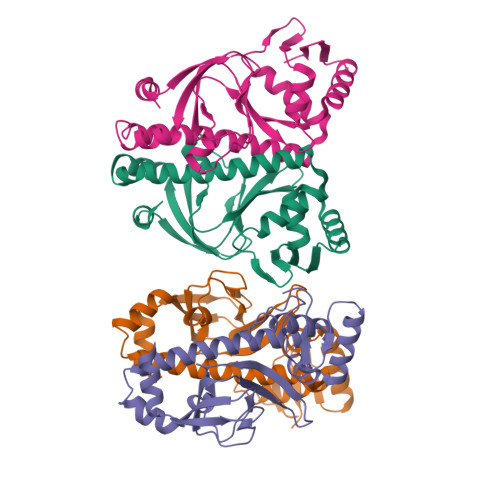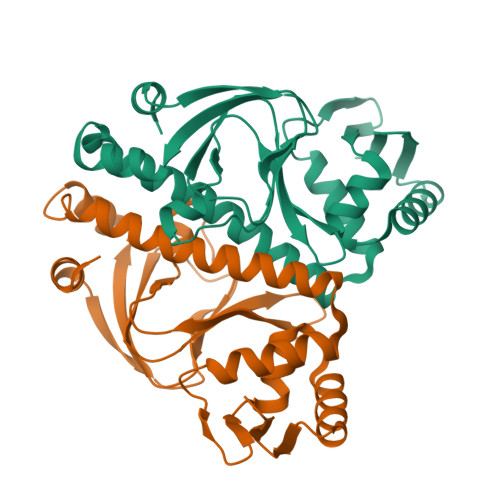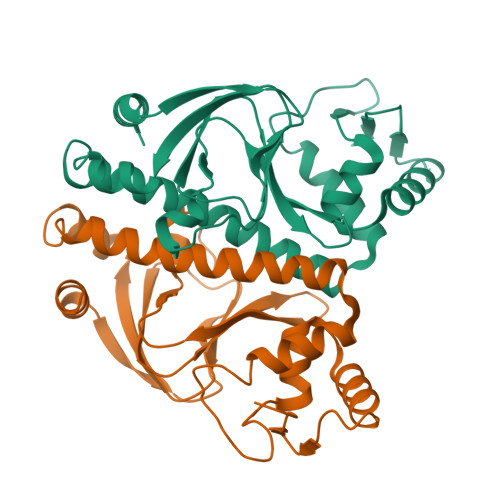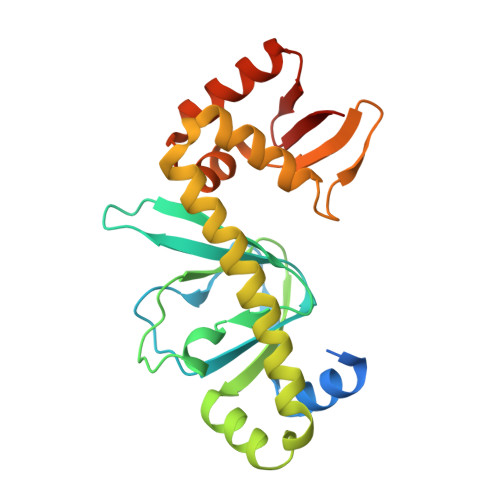The cAMP receptor-like protein CLP is a novel c-di-GMP receptor linking cell-cell signaling to virulence gene expression in Xanthomonas campestris.
Chin, K.H., Lee, Y.C., Tu, Z.L., Chen, C.H., Tseng, Y.H., Yang, J.M., Ryan, R.P., McCarthy, Y., Dow, J.M., Wang, A.H., Chou, S.H.(2010) J Mol Biology 396: 646-662
- PubMed: 20004667
- DOI: https://doi.org/10.1016/j.jmb.2009.11.076
- Primary Citation of Related Structures:
3IWZ - PubMed Abstract:
Cyclic-di-GMP [bis-(3'-5')-cyclic diguanosine monophosphate] controls a wide range of functions in eubacteria, yet little is known about the underlying regulatory mechanisms. In the plant pathogen Xanthomonas campestris, expression of a subset of virulence genes is regulated by c-di-GMP and also by the CAP (catabolite activation protein)-like protein XcCLP, a global regulator in the CRP/FNR superfamily. Here, we report structural and functional insights into the interplay between XcCLP and c-di-GMP in regulation of gene expression. XcCLP bound target promoter DNA with submicromolar affinity in the absence of any ligand. This DNA-binding capability was abrogated by c-di-GMP, which bound to XcCLP with micromolar affinity. The crystal structure of XcCLP showed that the protein adopted an intrinsically active conformation for DNA binding. Alteration of residues of XcCLP implicated in c-di-GMP binding through modeling studies caused a substantial reduction in binding affinity for the nucleotide and rendered DNA binding by these variant proteins insensitive to inhibition by c-di-GMP. Together, these findings reveal the structural mechanism behind a novel class of c-di-GMP effector proteins in the CRP/FNR superfamily and indicate that XcCLP regulates bacterial virulence gene expression in a manner negatively controlled by the c-di-GMP concentrations.
Organizational Affiliation:
Institute of Biochemistry, National Chung-Hsing University, Taichung 40227, Taiwan, ROC.



















